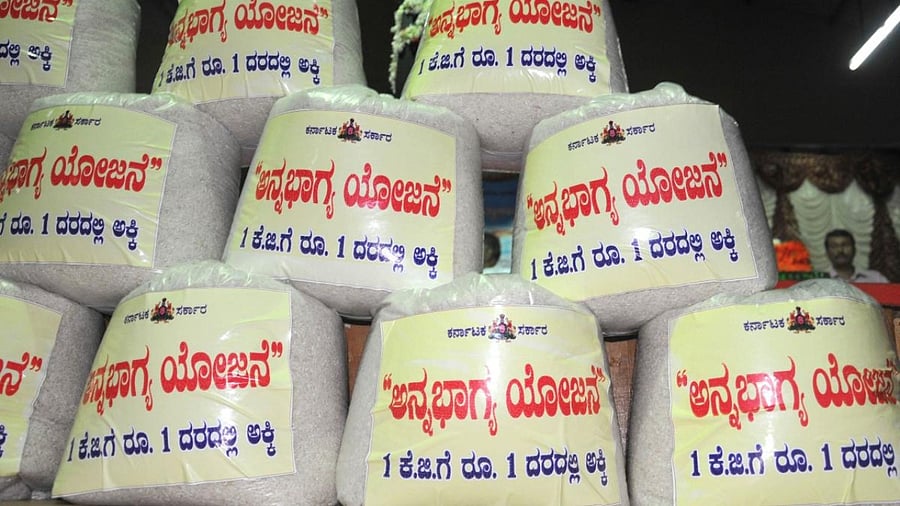
More than four crore people in Karnataka are set to avail the benefits of the Siddaramaiah government’s flagship ‘Anna Bhagya’ scheme, under which Below Poverty Line (BPL) families are entitled to get 10 kg rice per head every month, while the government is working against all odds to ensure the availability of rice for the scheme.
Karnataka has 1.2 crore BPL card holders, covering 4.42 crore citizens. That’s 72.13 per cent of the 6.1 crore population as per the 2011 census.
These numbers are in stark contrast to the latest findings of NITI Aayog, which show that only 13.16 per cent of the state’s population is poor, raising concerns about the manner in which BPL cards have been sanctioned in Karnataka.
Under the National Food Security Act, the terms BPL and APL have been replaced with Priority Households (PHHs) and Non-Priority households.
In Karnataka, to be identified as PHH, the family’s annual income has to be below Rs 1.2 lakh.
Employees of government/aided and any government allied institution cannot avail these cards. Those who have 3 hectares land in rural areas and 1,000 sq ft house in urban areas do not qualify; those owning four-wheelers other than for self-employment are not eligible.
“It’s unbelievable that more than 70 per cent of the state’s population is BPL. Does this mean that no development work has happened post-Independence? If the government must successfully implement its welfare schemes such as the Anna Bhagya, it must start looking into the veracity of BPL cards. Even the NITI Aayog parameters must be re-examined,” a senior Congress leader told DH.
Anna Bhagya is expected to cost the state Rs 840 crore per month. Of the five guarantees promised by the Congress, the other welfare scheme which predominantly caters to poor households is ‘Gruha Lakshmi,’ which promises Rs 2,000 to the woman head of the family. This is expected to cost about Rs 30,000 crore annually.
Further, the government annually expends money towards subsidies, including those for electricity, agriculture and allied sectors and housing, primarily targeted towards weaker sections of the society.
According to the medium term fiscal plan (MTFP), the total expenditure on subsidies for the current fiscal is expected to be Rs 31,367 crore.
Over the next five years (2026-27), the total amount of subsidies is expected to grow to Rs 36,157 crore.
A senior bureaucrat pointed out that the issue of BPL cards has always been political.
“In our state, more than 80 per cent of the population has succeeded in getting BPL ration cards. This is a prime indicator that local politicians do not allow their supporters to be removed from the list,” the official said, ruing that at present 94.8 per cent of the card holders have already completed their e-KYC (know your customer).
Bengaluru University’s economics department chairperson S R Keshava told DH that the National Sample Survey Office (NSSO) in 2010-11 estimated that approximately one in five individuals in Karnataka (around 20 per cent) was BPL, which translates to about 1.3 crore people, earning less than Rs 902 and Rs 1,098 per month in rural and urban areas, respectively.
“Post 2010-11, NSSO has not released any data in this regard. However, the NITI Aayog has released the Multidimensional Poverty Index baseline report in 2021, which suggests that only 13.16 per cent of the population is considered poor in Karnataka. This report is based on the findings of the National Family Health Survey 4 (2015-16),” he pointed out.
Former vice-chancellor of the University of Agricultural Sciences S Bisaliah emphasised the importance of free schemes for the poor.
“If the poor are deprived of food, how will any poor child be able to study or work upon attaining the youth? The state must invest in improving its human capital, but if the policy is framed without facts, it becomes unwieldy in the days to come and is bound to fail,” he said.
(With inputs from Shruthi H M Sastry)
